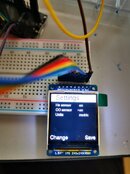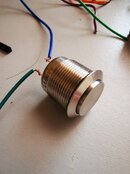Caesar.Wong
Registered
2. A single 18650 unfortunately drains too fast, because the MD62 is really power hungry. So I ended up with 2x18650 in series.
Hi Miyaru, mind if I ask why do you need to connect both your batteries in series, since both ESP32 and LM2596 works under 3.7v? Don't we need more battery capacity than higher voltage?
Thank you in advance for shedding lights for me
CW





